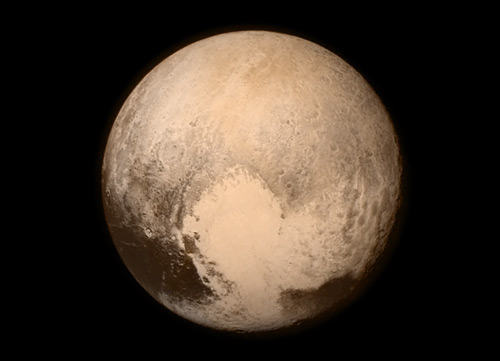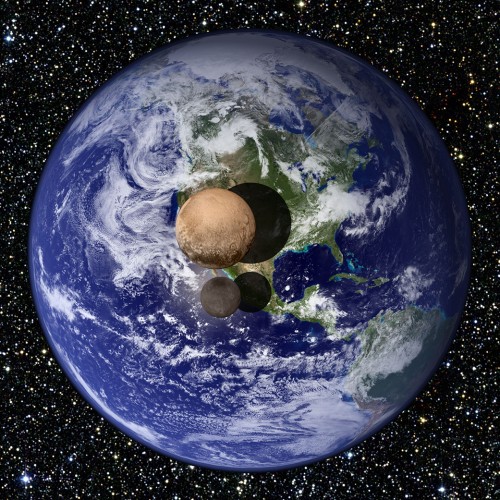
Perfect view: the sharpest image of Pluto to date taken by the New Horizons spacecraft. (Courtesy: NASA)
By Tushna Commissariat
After trundling through our solar system for more than 10 years, NASA’s New Horizons mission made its closest approach to the dwarf planet Pluto earlier today, at 12:49 BST. It was a mere 12,472 km from the planet’s surface – roughly the same distance from New York to Mumbai, India – making it the first-ever space mission to explore a world so far from Earth.
If you want to find out more about the New Horizons mission, read this recent news story by physicsworld.com editor Hamish Johnston. Above is best close-up view of this cold, unexplored world that the spacecraft sent back before its closest approach (when it was still 766,000 km from the surface), revealing in clear detail many of the planet’s surface features, including the “heart” at the bottom.

Balanced pair: Pluto (right) and its moon Charon. (Courtesy: NASA/JHUAPL/SWRI)
Above is another image (a composite) of both Pluto and its moon Charon, which orbit a common centre of mass.

Three is company too: an illustration showing the relative sizes of Pluto, its moon Charon and the Earth. (Courtesy: NASA)
And finally, to put this in a bit of perspective, this illustration above shows Pluto and Charon as they would appear if placed slightly above the Earth’s surface and viewed from a great distance. Recent measurements obtained by the New Horizons mission indicate that Pluto has a diameter of 2370 km (18.5% that of the Earth’s diameter), while Charon has a diameter of 1208 km.
Guidelines
Show/hide formatting guidelines
this text was deletedwhere people live in harmony with nature and animals</q>
Some text